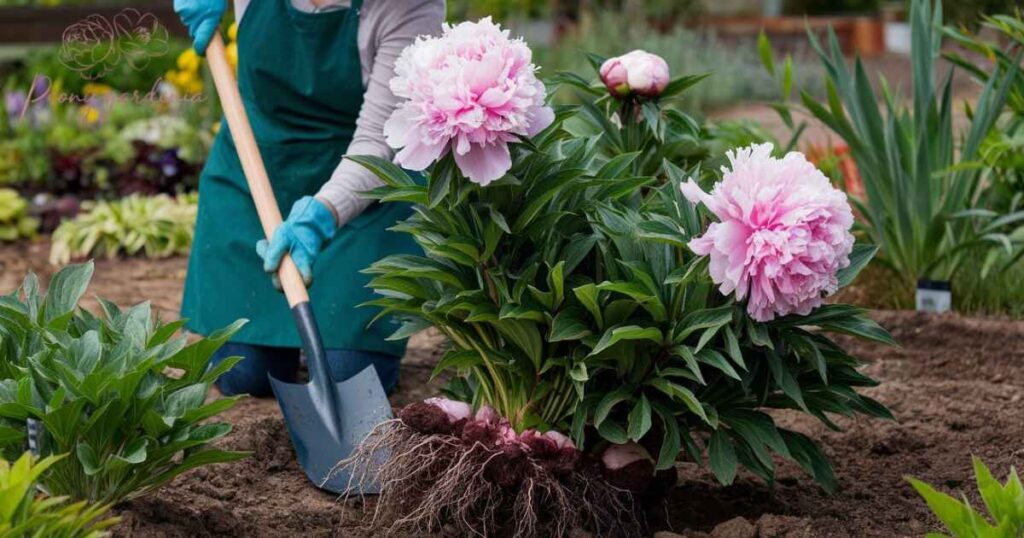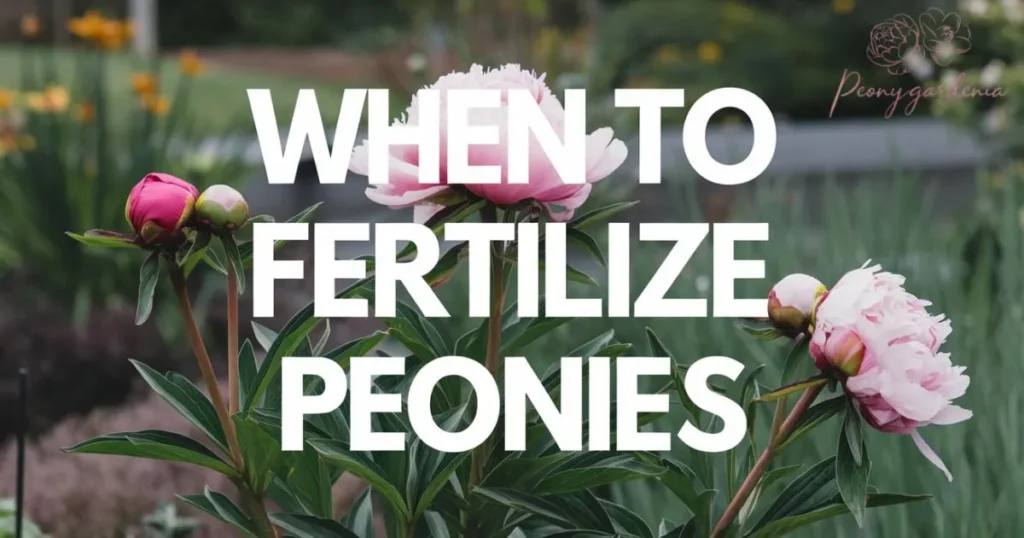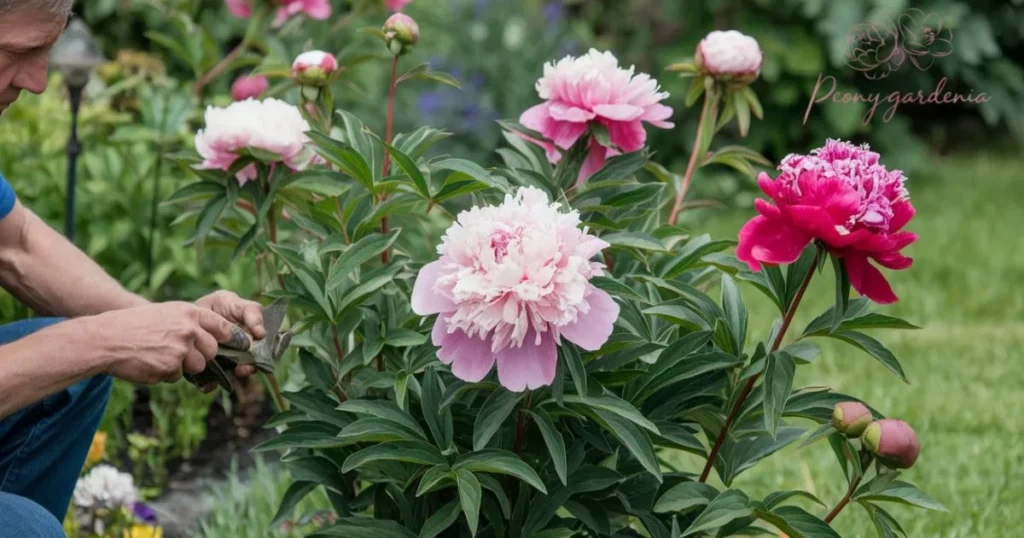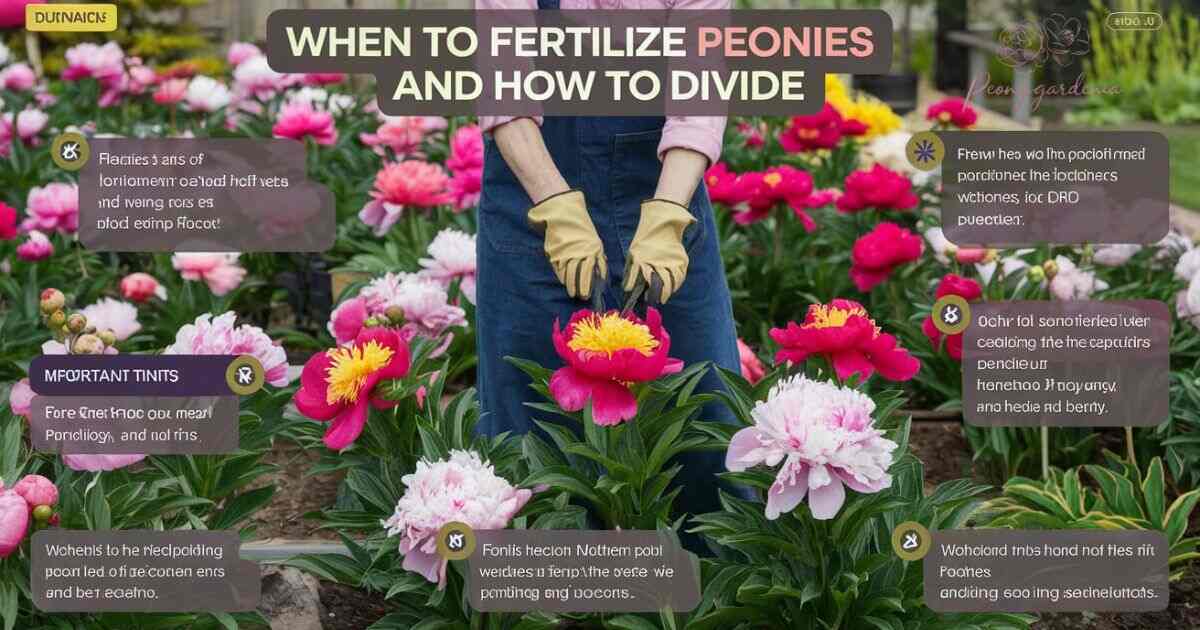Peonies are known for their stunning blooms and lush foliage, making them a favorite in many gardens. However, to achieve the best growth and vibrant flowers, it’s essential to care for them properly. One crucial aspect of peony care is knowing when to fertilize them. Fertilization plays a key role in supporting healthy root development, enhancing flower production, and ensuring overall plant vitality.
Knowing when to fertilize peonies can make a significant difference in their growth and bloom quality. Providing the right nutrients at the right time ensures your plants have the energy they need during critical growth stages. In this article, we’ll guide you through the best practices for fertilizing peonies, ensuring they bloom beautifully year after year.
Part 1: Dividing Peonies

Dividing peonies is essential for maintaining their health and ensuring vibrant blooms. It involves carefully separating the plant’s root ball into smaller sections, each with at least one healthy eye. Dividing peonies every 3–5 years prevents overcrowding, promotes better flowering, and rejuvenates the plant, ensuring long-term growth and beauty.
Understanding Your Peonies
Peonies are hardy perennial plants that thrive for many years when cared for properly. Over time, they can become overcrowded, causing a decline in their bloom quality and size. Dividing peonies is essential for rejuvenating the plant and improving its flowering potential. When peonies grow too large or stop flowering, it’s time to consider division.
The best time to divide peonies is during the fall or early spring when the plant is dormant. This timing minimizes stress on the plant, ensuring that the roots establish well in the new location. Dividing peonies also helps to control their size and maintain healthy growth, so don’t hesitate to perform this task every 3–5 years for the best results.
Read More: Can I Plant Peonies in a Pot?
Step-by-Step Guide to Dividing Peonies
To divide peonies, start by digging up the entire plant carefully, making sure to keep the root system intact. Use a sharp spade or garden fork to gently lift the plant out of the ground, being cautious not to damage the roots. Once the plant is out of the soil, shake off the excess dirt to expose the roots and eyes (buds).
Next, use a clean, sharp knife or pruning shears to cut the root ball into sections, ensuring each division has at least one healthy eye. Replant the divisions immediately in well-prepared soil, making sure the eyes are just below the surface. Water the plants thoroughly and mulch around them to keep the soil moist, giving your newly divided peonies the best start.
Common Mistakes to Avoid When Dividing Peonies
One of the most common mistakes when dividing peonies is planting them too deep. Peony eyes should be just below the soil surface; planting them too deep can prevent them from blooming properly. Ensure you don’t bury the eyes too deep when replanting to avoid future growth problems.
Another mistake is dividing the plants when they are not dormant. Dividing peonies during their growing season can cause stress and hinder their recovery. It’s important to wait for the right time to divide, either in the fall or early spring, to allow the roots time to regenerate and establish themselves in the new location.
Part 2: When to Fertilize Peonies

The best time to fertilize peonies is in early spring, just as they begin to emerge from dormancy. This provides essential nutrients for their growth and bloom development. A second round of fertilizing can be done after blooming, in late summer or early fall, to support root health and prepare the plant for winter.
Key Nutrients for Peony Plants
Peonies require a balanced supply of nutrients for optimal growth and vibrant blooms. The three main nutrients that peonies need are nitrogen, phosphorus, and potassium, often referred to as NPK. Nitrogen promotes healthy foliage growth, phosphorus supports strong root development, and potassium enhances the plant’s overall vitality and ability to resist diseases.
While these nutrients are essential, peonies also benefit from additional trace minerals like calcium and magnesium, which help in maintaining cell wall strength and overall plant health. Ensuring that your peonies receive these nutrients in the correct proportions is crucial for long-term growth and flowering.
When Is the Best Time to Fertilize Peonies?
The best time to fertilize peonies is in early spring, just as they start emerging from dormancy. This timing provides them with the nutrients needed to support their growth during the early growing season. Fertilizing at this time also helps the plants establish a strong foundation for healthy stems and vibrant blooms.
It’s also important to fertilize again after the peonies have finished blooming, typically in late summer or early fall. This second application supports the plant’s root growth and ensures that it remains healthy through the winter. However, avoid fertilizing late in the growing season, as this can encourage excessive foliage growth instead of preparing the plant for dormancy.
How to Apply Fertilizer to Peonies
When applying fertilizer to peonies, ensure you follow the manufacturer’s instructions for the correct dosage. Over-fertilizing can cause root burn or excessive foliage growth, which can weaken the plant. For granular fertilizers, scatter them evenly around the base of the plant, keeping them a few inches away from the crown to prevent direct contact with the roots.
For liquid fertilizers, dilute according to the instructions and apply them directly to the soil or use a sprayer for foliar feeding. Foliar feeding is especially beneficial for quick nutrient absorption, especially during the growing season when plants are actively taking up nutrients.
Part 3: Maintaining Healthy Peonies

Maintaining healthy peonies requires consistent care, including proper watering, regular fertilizing, and timely division. Providing the right nutrients, particularly a balanced NPK ratio, ensures strong roots, lush foliage, and vibrant blooms. Additionally, avoiding over-fertilization and pest management will help keep your peonies thriving and blooming year after year.
The Importance of Proper Nutrition for Peonies
Proper nutrition is crucial for maintaining healthy peonies that produce vibrant blooms year after year. Peonies that receive the right balance of nutrients are more likely to resist diseases, grow stronger, and develop more flowers. A balanced approach to fertilizing, with an emphasis on the right NPK ratio, ensures the plant’s long-term vitality.
Regularly fertilizing peonies with the correct nutrients helps maintain healthy roots, lush foliage, and large, fragrant blooms. Avoiding nutrient imbalances, such as too much nitrogen or not enough phosphorus, ensures your peonies continue to thrive and produce stunning flowers season after season.
Supplementing Traditional Fertilization Approaches
In addition to traditional fertilizing methods, you can supplement with foliar feeding or liquid fertilizers for a quick nutrient boost. Foliar feeding, which involves spraying the leaves of the plant, provides fast absorption of nutrients and helps the plant recover from nutrient deficiencies. It’s a great option during the growing season when peonies are actively developing.
Using foliar feeding or liquid fertilizers in combination with granular and organic options can maximize your peony’s nutrient intake. However, always be careful not to overdo it—balance is key to maintaining healthy, blooming peonies.
Conclusion
In conclusion, properly dividing and fertilizing peonies is crucial for their long-term health and beautiful blooms. Dividing them every few years helps maintain their vigor, while timely fertilization ensures they receive the nutrients they need to thrive.
By understanding when and how to divide and feed your peonies, you can create a garden full of lush, vibrant flowers year after year. With a little care and attention, your peonies will flourish, adding beauty and charm to your landscape for seasons to come.
FAQs
When is the best time to divide peonies?
The best time to divide peonies is in early spring or fall when the plant is dormant.
How often should I fertilize peonies?
Fertilize peonies in early spring and after blooming, typically once or twice a year.
Can I use bone meal for peonies?
Yes, bone meal is a great source of phosphorus for promoting root development.
Should I fertilize peonies after planting?
It’s beneficial to fertilize peonies after planting, especially with compost or a balanced fertilizer.
What is the ideal NPK ratio for peonies?
A balanced NPK ratio, such as 5-10-10, is ideal for healthy peony growth and blooms.









